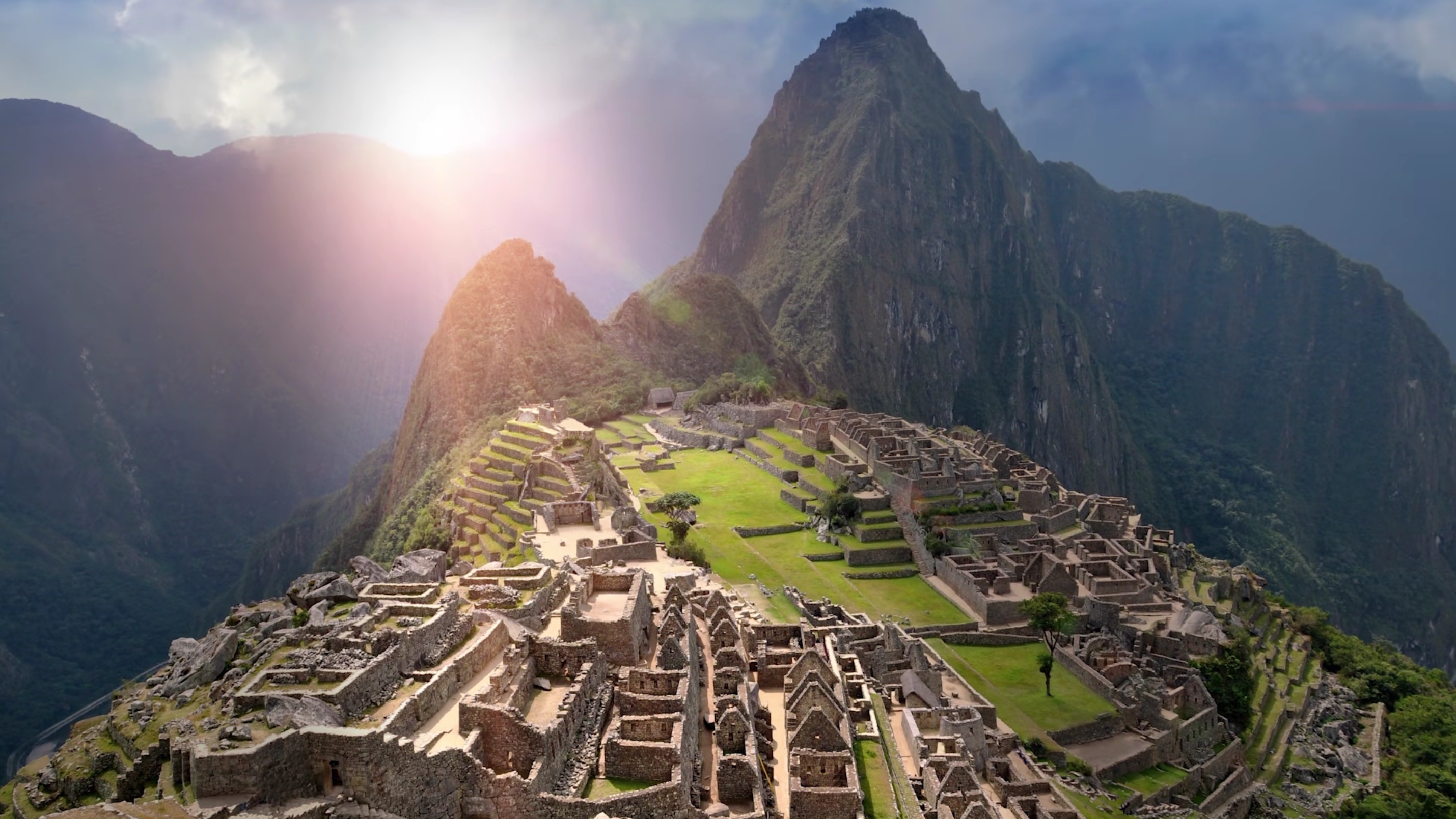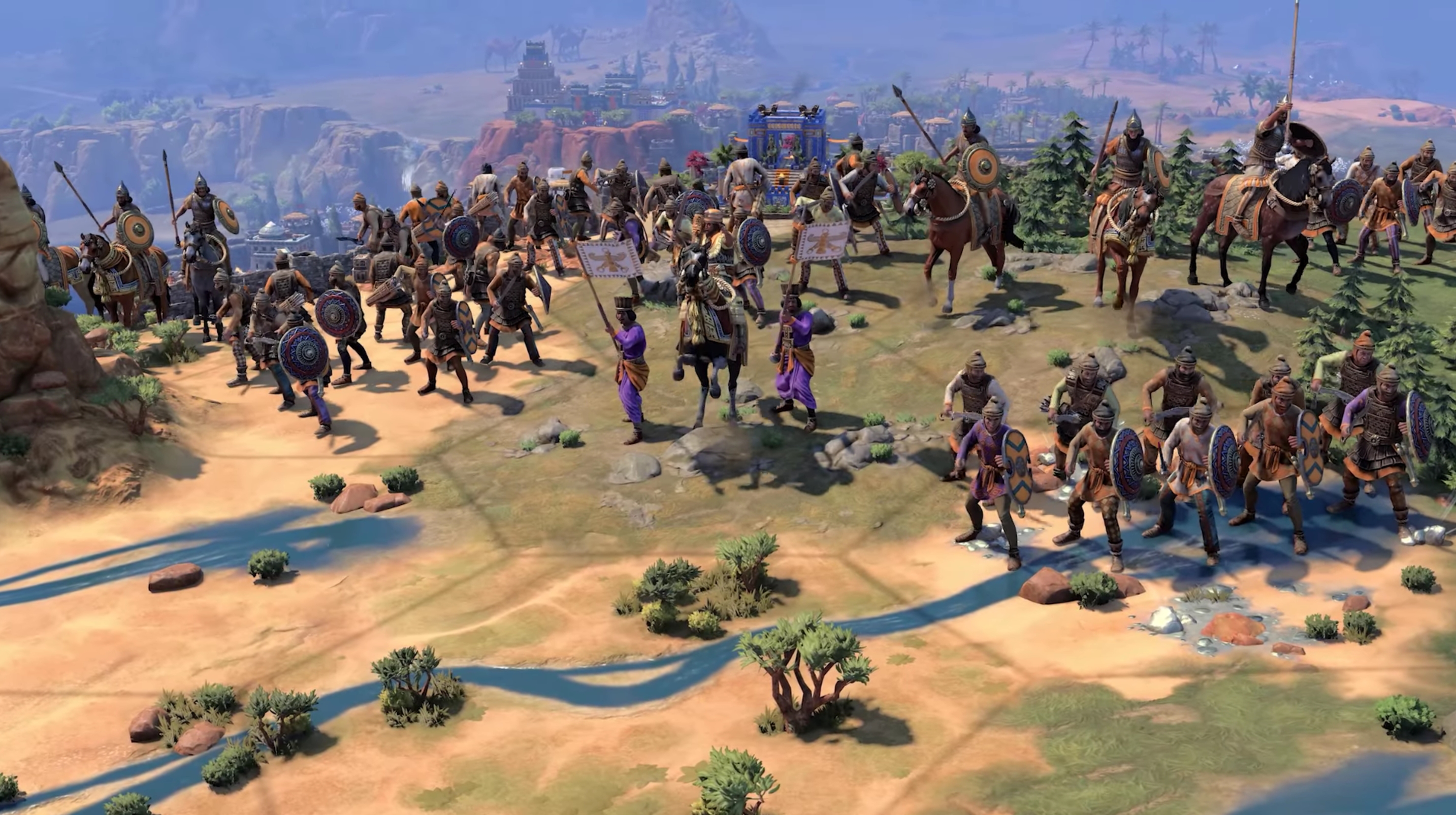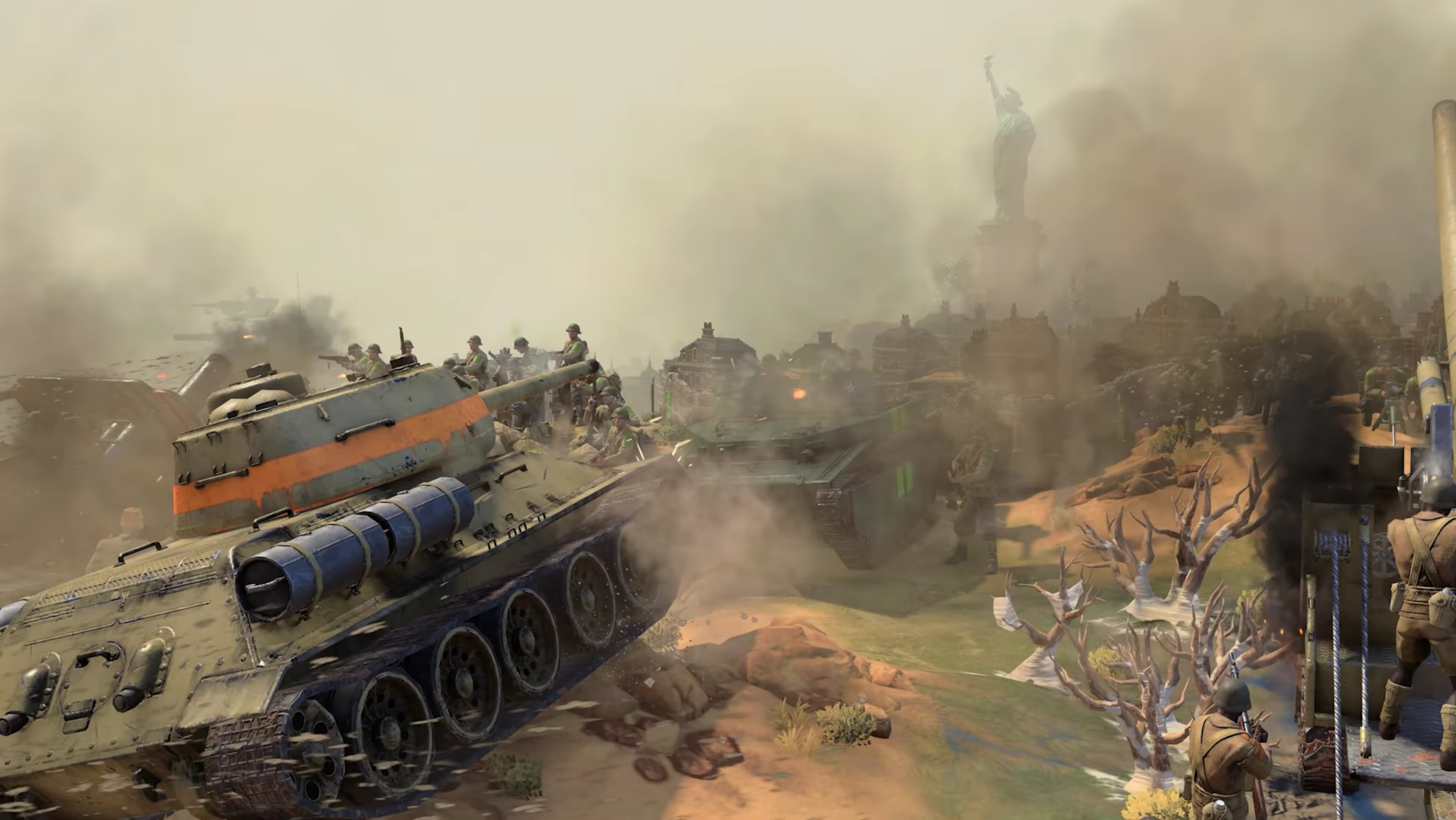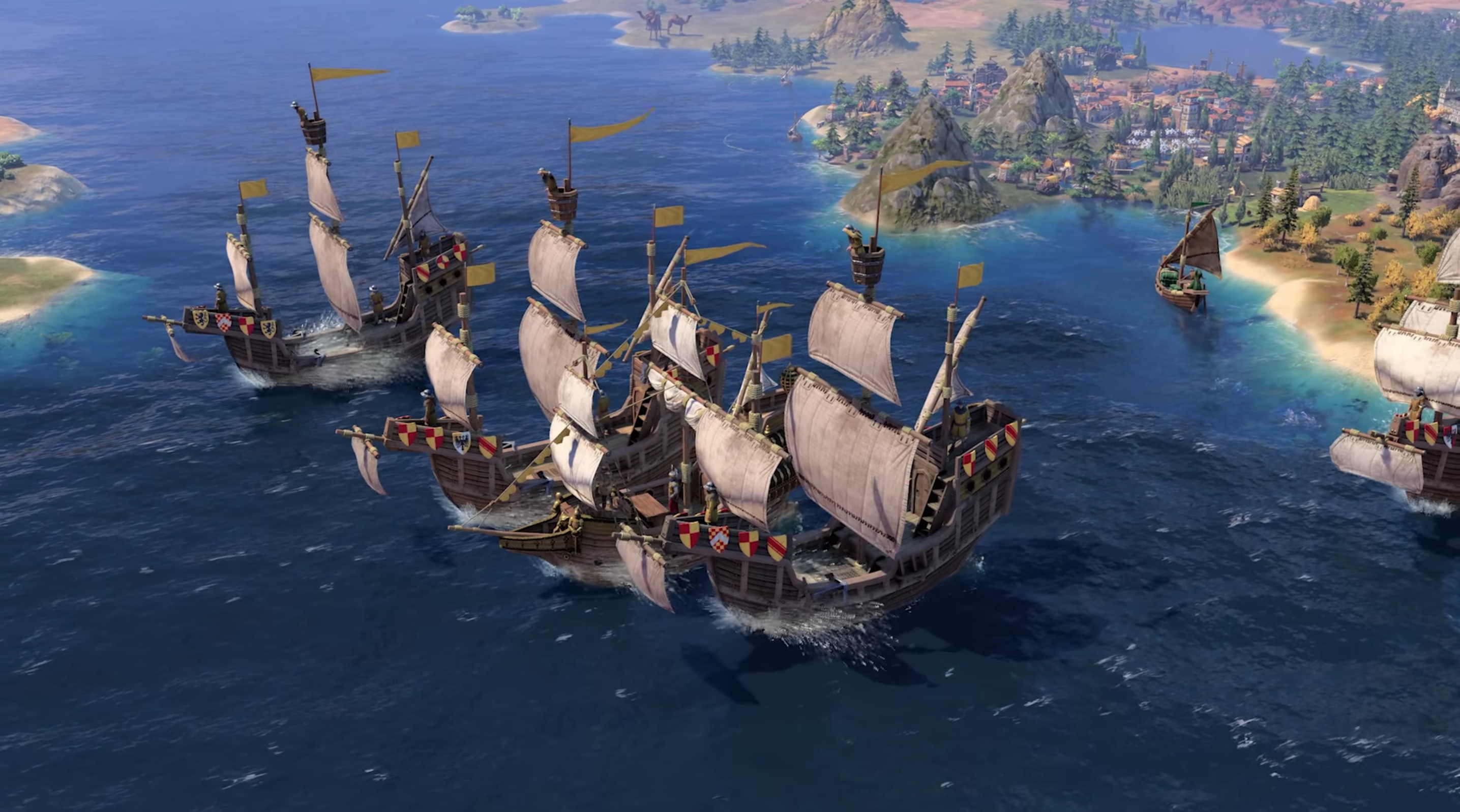"Legacy Paths" in Civilization 7: In-Depth Analysis and Winning Strategies - Unlocking the Power of Heritage to Lead Era Transformations

In Civilization 7, the “Heritage Paths” are a central part of the game’s mechanics, offering players a new way to grow and shape their civilizations. These paths allow you to direct your civilization’s development toward specific goals, be it military might, economic growth, cultural dominance, or diplomatic supremacy. This guide breaks down the system, offering a detailed exploration of how to choose the best paths for your playstyle and achieve your desired victory type.
Each path is tied to a specific aspect of your civilization’s development, and the choices you make can dramatically influence your strategy. In this guide, we’ll go over the different Heritage Paths, their key features, and the optimal strategies for each. We’ll also look at how combining multiple paths can create synergies that strengthen your overall approach.
Part 2: Understanding the "Heritage Paths" System

The core idea behind the “Heritage Paths” system is to give players more control over the growth of their civilization. These paths are broken down into categories that align with different aspects of your civilization’s strengths:
- Military – Pathways that enhance your military power, unit production, and defensive capabilities.
- Economic – Paths focused on wealth generation, resource management, and trade.
- Cultural – Paths that improve your civilization's culture, tourism, and diplomatic influence.
- Diplomatic – Paths that focus on establishing and maintaining relationships with other civilizations, alongside global influence.
The key to mastering these paths is to choose those that align with your civilization’s strengths and your long-term goals. Some civilizations will naturally lean toward military conquest, while others may favor cultural influence or diplomacy. The beauty of Civilization 7 lies in the flexibility and depth offered by these paths.
Each path has distinct benefits, and you can further customize your civilization by choosing a combination of paths to maximize synergy between different strategies.
Part 3: A Breakdown of Each "Heritage Path"

Let’s dive deeper into each type of Heritage Path and explore their key features and optimal strategies.
3.1 Military Heritage Paths
What You Need: A powerful early-game military, the ability to expand quickly, and strong defensive capabilities. Recommended “Heritage Path”:
- Military Legacy - “Ironclad Legions” (Boosts early military power and defense, helps produce units faster).
- Economic Legacy - “Golden Age” (Provides the economic support to fund military efforts).
- Civic Legacy - “Military Reforms” (Improves army management and unit upgrades).
Strategy: If your plan is to conquer and defend, prioritize military paths. This will help you quickly expand your borders while building a strong defense against rival civilizations. The economic legacy can back your military efforts, and once you're secure, military reforms will ensure your units stay up to date as you advance.
Key Strategy Points:
- Focus on military infrastructure early to speed up unit production.
- Use the economic legacy to support your military operations.
- Keep an eye on defense while expanding through both conquest and diplomacy. Example Civilizations/Leaders:
- Rome (Perfect for early military dominance)
- Mongolia (Rapid expansion and military strength)
- Germany (Boosted military via economic support) Victory Type Preference:
- Domination Victory
- Economic Victory (through military control of trade routes)
3.2 Economic Heritage Paths
What You Need: A solid economic base, resource generation, and extensive trade networks. Recommended “Heritage Path”:
- Economic Legacy - “Golden Age” (Greatly boosts economy and trade routes).
- Civic Legacy - “Trade Expansion” (Improves trade opportunities and international relations).
- Cultural Legacy - “Cultural Integration” (Strengthens the benefits of cultural exchanges).
Strategy: If you want to build a strong economic foundation, focus on economic paths. Once your economy is stable, use trade expansion to maximize income through commerce. Cultural integration can further enhance your economic efforts, fostering peaceful relations while boosting your economy with tourism and trade.
Key Strategy Points:
- Build infrastructure early to increase resource production.
- Establish and expand trade routes to generate consistent income.
- Leverage cultural exchange to build strong international relationships. Example Civilizations/Leaders:
- England (Strong economy and global trade routes)
- Netherlands (Perfect for trade-based economies)
- China (Balanced economy and culture) Victory Type Preference:
- Economic Victory
- Cultural Victory (via tourism and international influence)
3.3 Cultural Heritage Paths
What You Need: Cultural development, tourism generation, and long-term stability. Recommended “Heritage Path”:
- Cultural Legacy - “Artistic Renaissance” (Boosts culture, tourism, and the acquisition of great people).
- Economic Legacy - “Golden Age” (Supports funding for cultural endeavors).
- Civic Legacy - “Cultural Diplomacy” (Enhances cultural exchanges and boosts diplomacy).
Strategy: If cultural victory is your goal, prioritize cultural paths. The artistic renaissance boosts both culture and tourism, while the golden age will support cultural activities. Diplomatic and cultural exchanges will help strengthen your influence, contributing to peaceful relations with other civilizations.
Key Strategy Points:
- Invest in cultural wonders to boost tourism and culture.
- Use the golden age to fund cultural endeavors and increase tourism income.
- Use diplomatic strategies to solidify alliances and expand cultural influence. Example Civilizations/Leaders:
- Greece (Ideal for cultural development)
- France (Fantastic bonuses to culture and tourism)
- Korea (A perfect balance between science and culture) Victory Type Preference:
- Cultural Victory
- Diplomatic Victory (through tourism and diplomatic alliances)
3.4 Diplomatic Heritage Paths
What You Need: Strong diplomatic relations, influence in the world congress, and the ability to shape international politics. Recommended “Heritage Path”:
- Diplomatic Legacy - “International Alliance” (Improves diplomatic ties and global trade).
- Economic Legacy - “Golden Age” (Provides financial support for diplomatic actions).
- City Development Legacy - “Urbanization Process” (Improves city livability, stabilizing diplomatic relations).
Strategy: Prioritize diplomatic paths to form strong ties with other civilizations and become a key player in the world congress. The golden age supports your diplomatic actions, while city development will ensure your cities remain stable and thriving, laying the groundwork for sustained diplomatic success.
Key Strategy Points:
- Take an active role in world congress decisions to secure international favor.
- Maintain peaceful relations with multiple civilizations, resolving conflicts through diplomacy.
- Use economic support to strengthen diplomatic efforts. Example Civilizations/Leaders:
- Greece (Strong diplomatic advantages)
- Canada (Ideal for diplomacy and peaceful relations)
- Goa (If it returns, its traits would enhance diplomatic actions) Victory Type Preference:
- Diplomatic Victory
- Cultural Victory (through tourism and diplomatic relations)
Part 4: Strategic Analysis and Guide to “Heritage Paths” in Civilization 7

In Civilization 7, “Heritage Paths” are one of the core mechanisms that offer players unique choices to shape their civilization's development. These paths represent different focuses, such as military, economy, culture, or diplomacy, each contributing significantly to how the civilization progresses. Based on your goals, you can tailor your civilization’s growth by selecting paths that align with your strategy.
4.1 Military Heritage Paths
Core Need: Strong early-game military, rapid expansion, and defense capabilities. Recommended “Heritage Path”:
- Military Legacy - “Ironclad Legions” (Boosts early military strength, defense, and unit production).
- Economic Legacy - “Golden Age” (Provides economic support for military actions).
- Civic Legacy - “Military Reforms” (Enhances army management and unit upgrades).
Strategy: Prioritize military legacy paths early on to rapidly expand and secure borders. This approach allows you to build a strong defense against potential threats while also benefiting from an economic legacy to support military efforts. Over time, military reforms can offer important upgrades, ensuring that your military remains competitive through the mid-game.
Key Strategy Points:
- Focus on building military infrastructure early, allowing for faster unit production.
- Use economic legacy to fund military units and warfare.
- Maintain a defensive stance while expanding through conquest and diplomatic agreements. Example Civilizations/Leaders:
- Rome (A military powerhouse, suitable for early conquest)
- Mongolia (Excellent for rapid expansion and military strength)
- Germany (Strong economic support for military needs) Victory Type Preference:
- Domination Victory
- Economic Victory (through military control of trade routes)
4.2 Economic Heritage Paths
Core Need: Strong economic base, resource generation, and trade expansion. Recommended “Heritage Path”:
- Economic Legacy - “Golden Age” (Provides a significant boost to economy and trade routes).
- Civic Legacy - “Trade Expansion” (Expands trade opportunities, boosts relationships with other civilizations).
- Cultural Legacy - “Cultural Integration” (Enhances the economic benefits of cultural exchange).
Strategy: Economic paths should be prioritized to establish a strong economic base. Once the economy is stable, trade expansion should follow to maximize the benefits from commerce. Cultural integration helps increase tourism and diplomatic ties, improving the overall economy and fostering peaceful relations with other civilizations.
Key Strategy Points:
- Invest early in infrastructure to increase resource production.
- Build up trade routes to generate consistent income, which can fuel other strategies.
- Use cultural exchanges to solidify alliances and strengthen trade relationships. Example Civilizations/Leaders:
- England (Strong economy and trade routes)
- Netherlands (Excellent for economic expansion and trade-based strategies)
- China (Versatile in both economic and cultural aspects) Victory Type Preference:
- Economic Victory
- Cultural Victory (via tourism and international relations)
4.3 Cultural Heritage Paths
Core Need: Cultural development, tourism generation, and long-term stability. Recommended “Heritage Path”:
- Cultural Legacy - “Artistic Renaissance” (Boosts culture, tourism, and great people acquisition).
- Economic Legacy - “Golden Age” (Provides financial support for cultural investments).
- Civic Legacy - “Cultural Diplomacy” (Enhances cultural exchange and international relationships).
Strategy: Culture should be the main focus for civilizations looking to achieve a cultural victory. The artistic renaissance boosts both culture and tourism, while the golden age helps fund various cultural activities. Cultural diplomacy enhances the impact of international relationships, creating peaceful alliances and contributing to a cultural victory.
Key Strategy Points:
- Build cultural wonders to enhance tourism and culture.
- Use golden age to support cultural initiatives and increase tourism income.
- Use diplomatic strategies to foster peaceful relations and boost cultural influence. Example Civilizations/Leaders:
- Greece (Great for cultural development)
- France (Bonus to culture and tourism)
- Korea (Strong scientific and cultural synergy) Victory Type Preference:
- Cultural Victory
- Diplomatic Victory (through tourism and international support)
4.4 Diplomatic Heritage Paths
Core Need: High diplomatic inclination, strong international relationships, and significant world congress influence. Recommended “Heritage Path”:
- Diplomatic Legacy - “International Alliance” (Enhances diplomatic ties and international trade).
- Economic Legacy - “Golden Age” (Supports diplomatic actions through economic means).
- City Development Legacy - “Urbanization Process” (Improves city livability, stabilizing diplomatic relationships).
Strategy: Prioritize diplomatic legacy to improve relations with other civilizations and increase your influence in the world congress. Economic legacy provides the financial foundation necessary to support diplomatic efforts, while city development ensures urban stability, allowing diplomacy to flourish in the long term.
Key Strategy Points:
- Actively participate in world congress votes and proposals to secure international support.
- Maintain good diplomatic ties with multiple civilizations, resolving conflicts through diplomacy.
- Use economic support to strengthen trade relations and boost diplomacy. Example Civilizations/Leaders:
- Greece (If its traits favor diplomacy)
- Canada (Great for diplomatic and cultural interactions)
- Goa (If it returns, its traits can enhance diplomatic interactions) Victory Type Preference:
- Diplomatic Victory
- Cultural Victory (through tourism and diplomatic relationships)
Part 5: Cross-Era “Heritage Path” Combinations and Synergy

In Civilization 7, “Heritage Paths” do not exist in isolation. As your civilization progresses through different eras, you can combine different paths to maximize their potential and achieve greater strategic advantages. Here are a few typical “Heritage Path” combinations and their synergies:
- Military and Economic Combo: Recommended Combination: Military Legacy - “Ironclad Legions” + Economic Legacy - “Golden Age” Synergy: The military legacy boosts early military strength and production, while the economic legacy provides support for military operations, ensuring that you can expand without falling into a financial crisis. These combined effects allow you to maintain a strong and stable economy while pursuing rapid expansion.
- Culture and Science Combo: Recommended Combination: Cultural Legacy - “Artistic Renaissance” + Scientific Legacy - “Enlightenment” Synergy: The cultural legacy boosts both culture and great people, strengthening your tourism capabilities, while the scientific legacy accelerates your tech tree, unlocking higher-tier units and buildings. Together, they enable you to dominate both culturally and technologically.
- Diplomatic and City Development Combo: Recommended Combination: Diplomatic Legacy - “International Alliance” + City Development Legacy - “Urbanization Process” Synergy: The diplomatic legacy boosts international relations and world congress influence, while the city development legacy improves city infrastructure, ensuring that your cities grow at a sustainable rate. This combination is ideal for civilizations that wish to maintain peaceful diplomatic ties and stability.
Part 6: Conclusion

In Civilization 7, “Heritage Paths” are a core mechanism that provides players with a wide range of strategic choices. Each path represents a different focus of civilization development, and the selection of these paths directly impacts your civilization’s progress and ultimate victory conditions. By understanding the mechanics and synergies of each path, players can strategically align their civilization’s growth with their desired victory type.
Whether focusing on military expansion, economic growth, cultural development, or diplomatic interactions, the “Heritage Paths” provide diverse avenues to pursue. With this analysis, players should be better equipped to make informed decisions, choose the most fitting paths for their playstyle, and lead their civilization to victory.